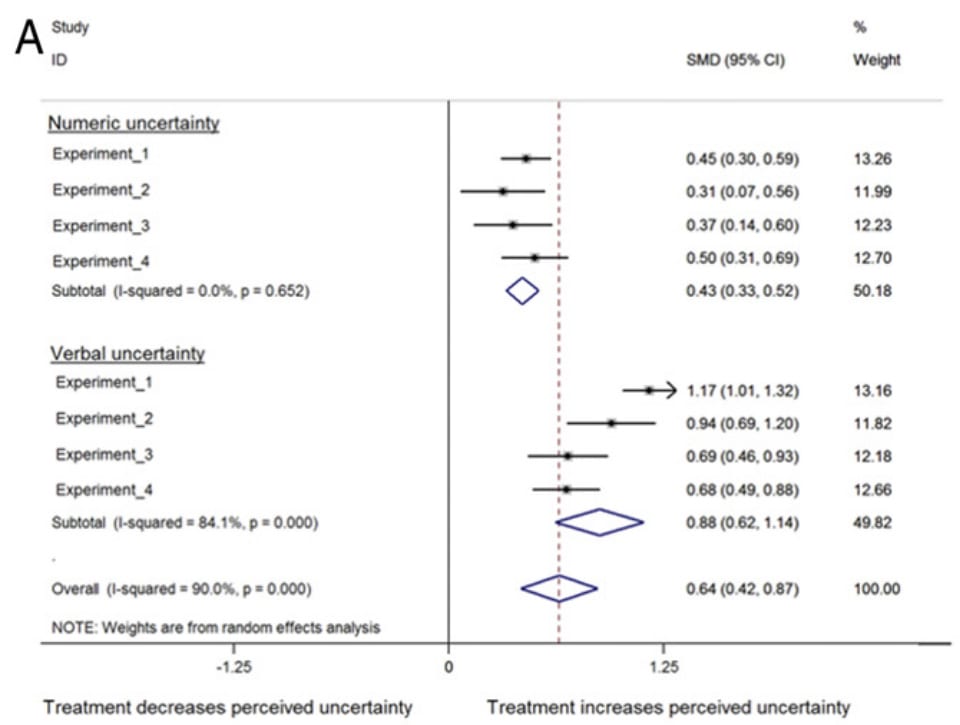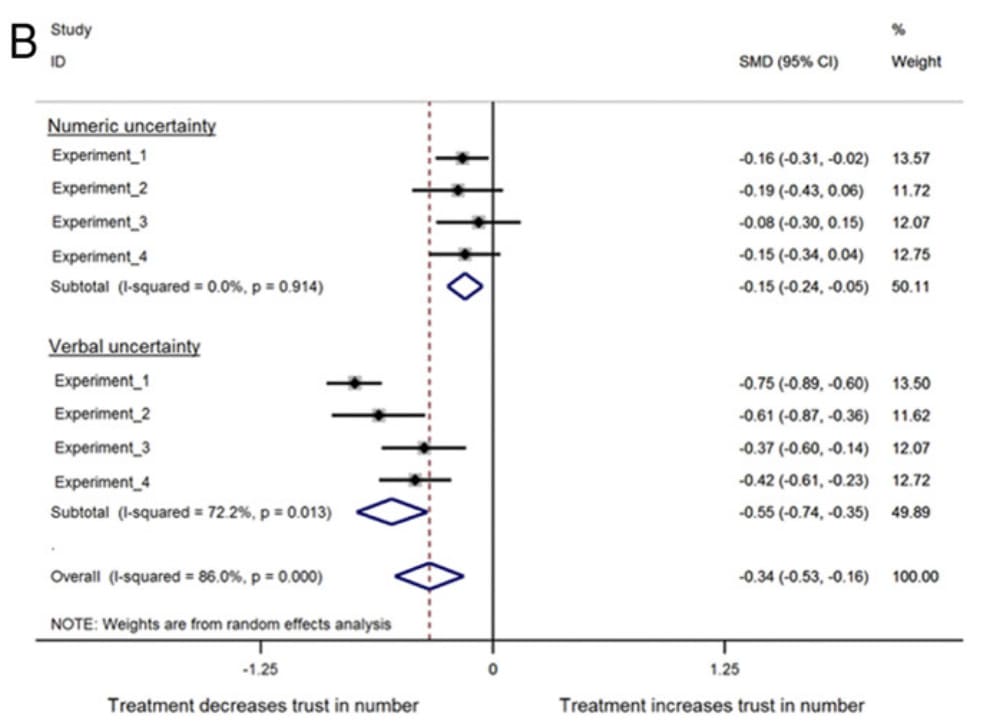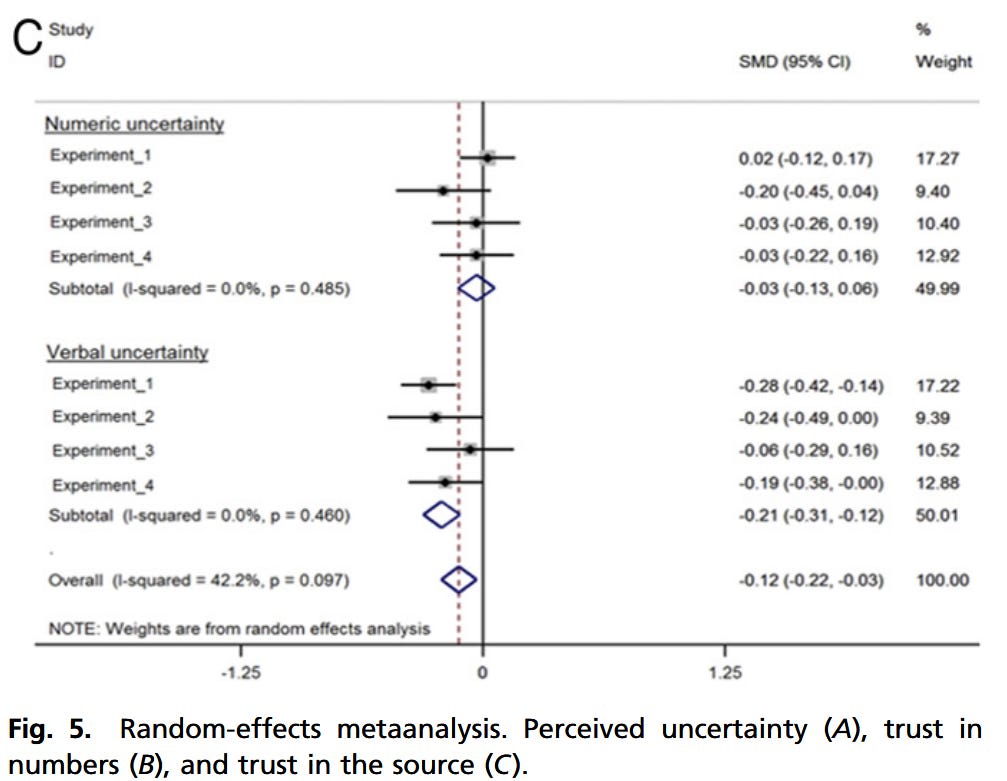It causes people to be less confident in the number itself (as it should), but does not cause people to lose trust in the source of that number.
This is interesting to know, if true, but I would like to explicitly note that there is a potential problem in the complete opposite direction, namely people giving too much trust to those who talk about uncertainty in (what seems to the public like) very "certain" terms. Ezra Klein talked about this a bit in his appearance on the 80k hours podcast about 3 years ago:
Ezra Klein: I’ll note there’s a related thing in politics where — and this is endlessly proven out now — people with the highest levels of political information tend to exhibit the highest levels of partisan self-deception. This is a very hard line to walk, but there is nothing more dangerous than thinking you know a lot, and nothing more dangerous, particularly, than thinking you know a lot about how you think. You really need a lot of humility. And so at the best I think the rationality community imposes humility on itself, and at the worst, there’s a performance of imposing humility that’s a way of not actually having humility, right? That is a way of, you know… I’ve known forever at Wonkblog and other things, things seem more convincing if you put them in chart form, like they just look more official.
Ezra Klein: I appreciate that Scott Alexander and others will sometimes put ‘epistemic status, 60%’ on the top of 5,000 words of super aggressive argumentation, but is the effect of that epistemic status to make people like, “Oh, I should be careful with this,” or is it like, “This person is super rational and self-critical, and actually now I believe him totally”? And I’m not picking on Scott here. A lot of people do this.
Ezra Klein: Larry Summers did this all the time. He was known in the administration for… He would constantly, when people were saying something, be like, “Well, what probability do you put on that?” And so people are just pulling like 20%, 30%, 70% probabilities out of thin air. That makes things sound more convincing, but I always think it’s at the danger of making people… Of actually it having the reverse effect that it should. Sometimes the language of probability reads to folks like well, you can really trust this person. And so instead of being skeptical, you’re less skeptical. So those are just pitfalls that I notice and it’s worth watching out for, as I have to do myself.
It was helpful that Ezra noticed and pointed out this dynamic.
I think this concern is probably more a reflection of our state of culture, where people who visibly think in terms of quantified uncertainty are rare and therefore make a strong impression relative to e.g. pundits.
If you look at other hypothetical cultural states (specifically more quant-aware states e.g. extrapolating the last 100 years of math/literacy/finance/physics/military/computer progress forward another 100 years), trust would pretty quickly default to being based on track record instead of being one of the few people in the room whose visibly using numbers properly.



